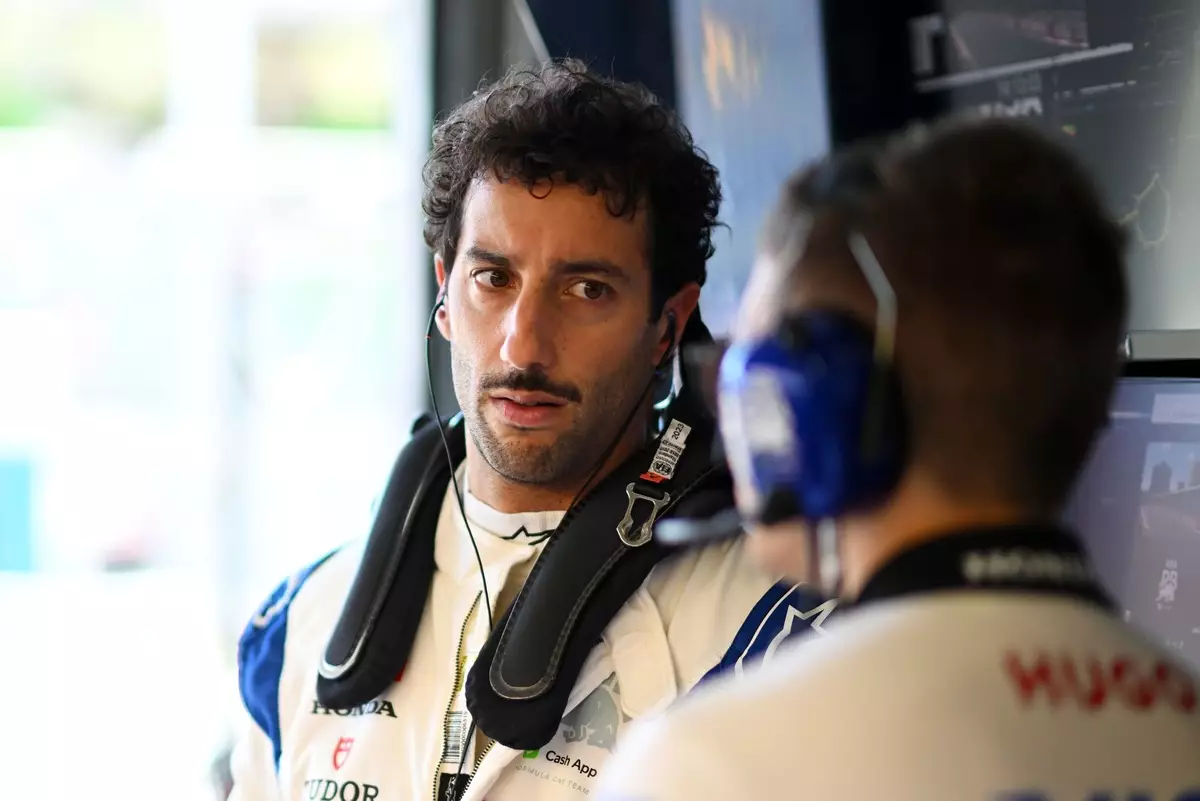The Lessons from Daniel Ricciardo’s Return to Red Bull Racing
In the fast-paced world of Formula 1, change is the only constant. Drivers come and go with an almost dizzying frequency, but few returns have captured the imagination quite like Daniel Ricciardo’s comeback to Red Bull Racing. As a fan of both the sport and culinary adventures, I find parallels between these high-stakes arenas. Just as recipes need the right balance of ingredients, a successful Formula 1 team requires the perfect mix of talent, strategy, and adaptability. Ricciardo’s return was a blend of excitement and nostalgia for fans who remember his past triumphs with Red Bull.
As the 2023 season unfolded, it became clear that things weren’t as rosy as hoped. Despite the initial thrill, Ricciardo faced significant hurdles that echoed many challenges we encounter in life and cooking alike. Think about trying a new recipe; sometimes it doesn’t turn out as expected, even with all the right ingredients at hand. The same can be said for Ricciardo’s journey—full of potential but ultimately falling short of expectations. This reflection on his return gives us valuable insights into team dynamics and strategic decisions within Red Bull Racing.
Key Takeaways
- Daniel Ricciardo’s return to Red Bull Racing was filled with high expectations and challenges.
- Injuries and performance inconsistencies marked his journey back to Formula 1 glory.
- The experience highlighted the importance of synergy between a driver’s skills and team strategy.
The Challenges of Ricciardo’s Return
Ricciardo’s reintegration into Red Bull was marred by unfortunate timing and injuries, notably a hand injury during a practice session at the Dutch Grand Prix. This setback was akin to burning your first batch of cookies after years away from baking—it threw off his rhythm just as he was getting back into the groove. For a seasoned driver like Ricciardo, recovering that competitive edge isn’t just about physical healing. It involves mental resilience too, something that was tested throughout his return season.

Despite having ample preparation time over the off-season, adjusting to the VCARB 01 proved tougher than expected for Ricciardo. For anyone who’s tried their hand at cooking unfamiliar dishes, this scenario is relatable. Sometimes following the recipe to a tee still doesn’t guarantee success if you can’t feel your way through it. While there were flashes of brilliance—a commendable performance in Miami stands out—consistency wasn’t on his side this time around.
Team Dynamics and Competition
Formula 1 is fiercely competitive; any standout moment can quickly be overshadowed by subsequent performances. Ricciardo found himself in direct competition with teammate Yuki Tsunoda, who consistently outperformed him throughout the season. It’s like trying to perfect a soufflé while someone else is nailing it every single time next to you—it can be demoralizing. This performance gap not only affected Ricciardo’s prospects at Red Bull but also pushed the team to rethink their future driver strategies.

Laurent Mekies, Red Bull’s team principal, candidly assessed Ricciardo’s tenure by acknowledging shared responsibility for not maximizing his potential. Mekies’ statement highlights how crucial it is for teams to support their drivers effectively, much like ensuring your kitchen tools are up to par before starting a complex recipe. If the tools—and in this case, the car—aren’t optimized for the task at hand, even the best chef—or driver—can struggle to deliver results.
The Role of Engineering and Adaptation
The challenges faced by Red Bull in providing Ricciardo with a consistent platform highlight deeper questions about engineering adaptability. Much like adjusting spice levels in cooking according to taste preferences, tailoring a car’s setup requires understanding both its capabilities and its driver’s needs intimately. Mekies’ comments reflect an internal shift toward stronger collaboration between drivers and engineers—a necessary evolution for any team aiming for peak performance.
Interestingly enough, while Ricciardo’s struggles were evident, they inadvertently paved the way for his successor Liam Lawson’s success. The extensive data analysis triggered by these challenges provided Lawson with invaluable insights that could be leveraged for better outcomes on track. This proactive approach allowed Red Bull to explore broader set-up options benefiting not just Lawson but enhancing overall competitiveness—a testament to learning from setbacks akin to perfecting your signature dish after several attempts.
The Broader Implications
Ricciardo’s experience during this stint offered critical lessons not just for him but also for Red Bull Racing’s broader developmental goals. His knowledge of race-winning strategies played an instrumental role as Red Bull underwent significant technical transformations—a reminder that even when things don’t go perfectly according to plan initially (like your first homemade pasta attempt), there’s always something valuable gained along the way.

As Red Bull looks toward future seasons armed with these insights from Ricciardo’s tenure—balancing driver feedback alongside engineering advancements becomes imperative—a lesson applicable beyond racing into various fields reliant on innovation under pressure such as culinary artistry or any other domain demanding creativity tempered by structure.
Final Thoughts
The narrative surrounding Daniel Ricciardo’s return isn’t solely about what went wrong; rather it serves as an example of resilience amidst adversity—a theme familiar across different aspects including professional kitchens where chefs constantly adapt their methods based on available resources or evolving customer tastes alike! Ultimately both sports require continuous reflection learning adaptation ensuring they stay competitive dynamic changing landscapes whether tracks global circuits or palates discerning diners worldwide!
Daniel Ricciardo
Red Bull Racing
Formula 1
team dynamics
performance strategy


Leave a Reply